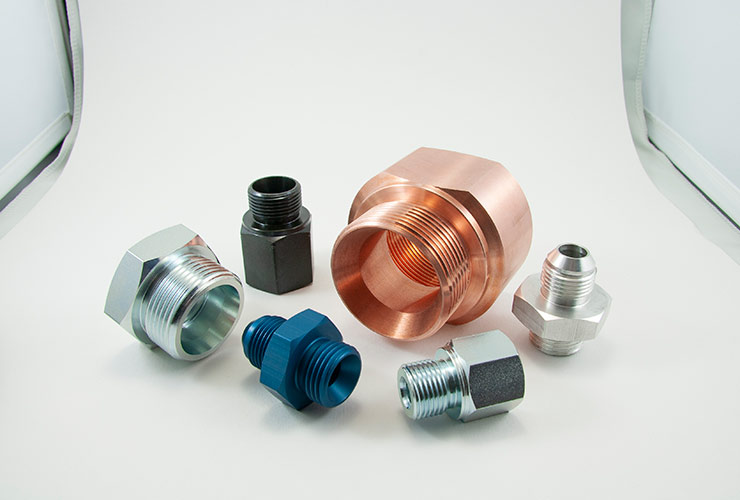Hydraulic fittings and couplings get taken for granted, especially with mobile machinery, where profit margin can overshadow design. The reality is that fittings and couplers are as crucial to the design of a machine as are the pumps, valves and actuators.

Image courtesy of Adaptall
Let’s consider what makes a hydraulic fitting functional: it must fit into the port of the component it was selected for, it must withstand system pressure without fail, and it must flow well with little pressure drop. I believe the first two factors are adhered to uniformly, but consideration to flow is sometimes ignored.
Calculating pressure drop through fittings — all of them — is an essential element of fluid power machine design. Although the math may be complicated, online calculators allow you to enter the fitting size, type and quantity to see actual pressure drop. Knowing the pressure drop is critical to design because it allows you to find the sweet spot between price and performance.
If the fittings are undersized, you must subtract the energy required to overcome flow from the energy available for work. Hundreds of psi of pressure drop could reduce machine performance due to undersized fittings or excessive connections and elbows. Should fittings be oversized to prevent flow restriction, you may be increasing cost and bulk. As fittings increase in size, their price may rise exponentially, so forethought results in the correct size, price and flow rate for your design.
Myriad options are available for thread and sealing types. Let’s start by dismissing NPT thread altogether. NPT fittings require so much extra work and effort to install, and when you factor their inferior performance, there is no excuse to use them.
Fittings, whenever possible, should only use soft-sealing technology, like O-ring boss (in the form of SAE, BSPP or metric straight thread) fittings. O-rings provide a positive seal with little chance for leakage and are easy to ensure a tight, leak-free connection. For hose connections, JIC fittings have suited the world well up to this point but are now supplanted by O-ring face fittings, which provide a superior connection. Of course, the price also plays a part in fitting design, and O-ring fittings do cost more, so one must balance price with performance once again when designing with fittings and couplings.
Filed Under: Fittings, Couplings & Adapters, Hose Assembly Tips